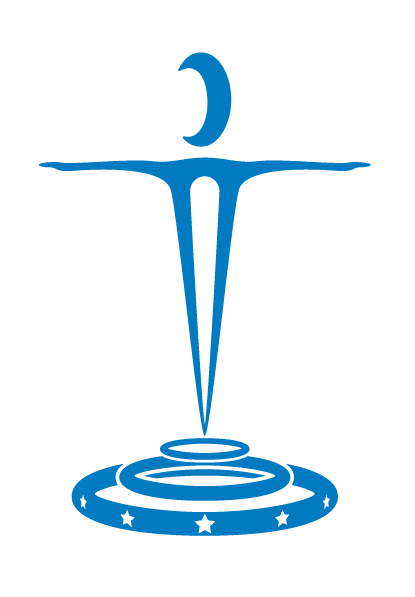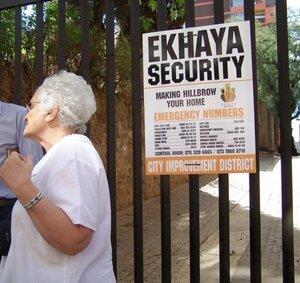Hillbrow is an area that the white suburban residents of Johannesburg do not go near. However, there are signs that bit by bit the neighbourhood is getting better. The transformation is being spearheaded by the Johannesburg Housing Company, a social enterprise, and by dynamic community organisation.
I have been to Johannesburg several times, but never previously visited Hillbrow on foot. Indeed, on my first trip back in 1995, I was made to promise that I would not do my usual form of “urban exploring” (which my wife calls “aimless wandering”) in Hillbrow. Much of the housing in Hillbrow is rented. There are high rise apartment blocks and also the kind of brick-built four storey blocks with balconies that were built as social housing in many European cities in the 1930s. However, blocks emptied or were emptied, and became hi-jacked by gangsters who saw landlordism as a profitable line of business. Hi-jacking a building means illegally taking over the rights of a landlord and illegally renting out the accommodation, without bothering to do any maintenance or repairs.
There were turf wars, drugs and frequent shootings. Alleys between buildings became strewn with rubbish, unrepaired pipes spilled waste water and sewage across the streets. Public authorities, including the police, were unable to operate effectively.
A bottom-up approach
The Johannesburg Housing Company, a social housing organisation, owned a few blocks of flats. It set up a community development arm called Makulong. From this, in 2004, came the eKhaya Neighbourhood Improvement Programme and then the eKhaya Neighbourhood Association. Josie Adler, a grey-haired white woman, who lived in Hillbrow before it hit the skids, is a driving force as a community organiser. Like Barack Obama, Josie studied and admired the writings and practices of Saul Alinksi, the legendary American community organiser. She gets residents to organise themselves and support each other. If they work together the powerless can confront their exploiters and convert liabilities into assets. The key is to help people see what are their shared concerns and how they need to work together to make a difference.
Membership of the eKhaya Neighbourhood Association is voluntary, but by working at connecting everyone in the area to each other, they have been able to draw in not only local residents, but building caretakers and property owners, some of whom were sceptical at first that anything positive could be achieved by such methods. Today the eKhaya neighbourhood covers about 15 blocks, and a park has been developed running through it, though the park is still overlooked by high blocks that have been “hi-jacked” by criminals who operate a very basic landlord service (things like water and electricity do not automatically come with the rent).
The association has organised inter-street football and netball competitions for local residents: crime drops when the games are being played, and people who had been strangers get to know one another. It is harder to commit random crime when people know each other. A new five-a-side football court was created in the neighbourhood by the Dutch Embassy and the Cruyff Foundation for the 2010 World Cup. There is also an annual eKhaya Kidz Day. By banding together it has been possible to create local security services that are prepared to press charges against wrong-doers. Thus it is no longer necessary for vulnerable individuals to initiate the legal process or give evidence in court. Back alleys once covered in filth have been fenced and cleaned and are now maintained. Local traders are doing better.
Show that change is possible
Josie Adler is passionate about the potential of a community organisation approach to deliver real change for some of the most disadvantaged people. The work often starts within a building, where connections are made between people, confidence is built and mutual support is nourished. Once that kind of framework is in place, other shared action and campaigns become possible. When people see that positive results can be achieved, momentum can be developed.
The eKhaya project also shows that a coat of paint can make a difference to the feel of an area. This may seem unlikely, since the problems confronting residents are clearly deep-rooted and concern basic things like jobs, money, family breakdown, crime and violence. Is giving a grey-looking building a lick of bright paint really going to have much effect? Maybe not, but impressions do matter. One way to rebuild confidence and show that things can get better is simply to make the elevations of the buildings begin to look bright and colourful, and show that somebody really does care for the place. Similarly the design and management of the public space is important to increasing a sense of security on the streets.
Towards Inclusive Cities
I was in Johannesburg as part of an initiative by the Commonwealth Local Government Forum to develop a network of Inclusive Cities. The idea is to bring together politicians and professionals from cities across the Commonwealth to share practices and work at city and local levels to make places better and safer for all residents. The idea has much in common with the underlying principles of the Innovation Circle and also the Trans-in-Form project. Knowledge exchange amongst practitioners and amongst politicians can be a powerful way to learn and reflect on your own municipality. What the eKhaya example shows is how community organisation and development can work in an extremely challenging inner-urban context. The city authorities in Johannesburg have been able to work with the project and with the Johannesburg Housing Company, but the prime driver of change has been outside, not inside the council. Local governments in Europe can learn from practices like this in the Global South.
For more information see www.jhc.co.za. For film of the opening of the football court go to www.cruyff-foundation.org. For more photos and an article see http://urbanjoburg.blogspot.com/2009/10/hillbrow-or-hellbrow.html

